Assembly Design And Basic Detailing
DO YOU WANT TO EXCEL IN ASSEMBLY DESIGN AND BASIC DETAILING ASSIGNMENT – ORDER AT EXPERTSMINDS!
Question 1: Perform a design heat-loss calculation to assist the mechanical engineer with the sizing of the heating system.
Answer: Introduction: The report provides the architectural design for the building. The building is constructed as high-end energy efficient home on the ocean in west Vancouver, BC. the report also includes the details of the building enclosures and assemblies. The architectural design also includes the design for heat-loss calculation for assisting the mechanical engineer with the sizing of the heating system. The standards are used for the project are above the requirements of BC building code to meet the requirements of client for constructing energy efficient home. The following are the basic specification for the project such as
• Walls, above grade:R-25 effective
• Walls, below Grade:R-20 effective
• Slab on grade:R-15 insulation, full slab coverage
• Suspended floors, R-30 effective
• Attic Rofts:R-50 Effective
• Sloped Cathedral roofs:R-30 effective
• Roof decks:R-30 effective
• Windows : R-50
• Overall Hpuse Airtightness of less than 2 ACH50
• House claddings have standard cement stucco(7/8")
• Cultured stone (11/2")
• Roofing has standing seam zinc metal roof
• Decks consists concrete pavers
Part 1: Assembly Design and Basic Detailing
a. Above Grade Wall Assembly
Answer: Critical barriers: • Large droplets due to rain or sleet snow
• Water in the form of vapour
• Vapour barrier or Retarders
• Air barriers
• Air has small droplets
• Ground water

SAVE YOUR HIGHER GRADE WITH ACQUIRING ASSEMBLY DESIGN AND BASIC DETAILING ASSIGNMENT HELP & QUALITY HOMEWORK WRITING SERVICES OF EXPERTSMINDS.COM!
b. Below Grade Wall Assembly
Answer: • Water in the form of vapour
• Vapour barrier or Retarders
Materials: • Air barrier materials
• UV stable
• Non-corrosive materials
Above grade wall assembly analysis: Exterior claddings are the properties used to finish the exterior side of the building. The materials are either naturally available, human made or synthetic. The materials are selected based on the weather condition of the physical zone of the building such as wet zone, dry zone. The materials selected for exterior protection of the building should be protect building from rain, air, heat etc. The materials are selected based on the following properties such as
• Air barrier
• Air retarder
• Insulating element
• Structured element
R-value: Resistance from heat flow can be obtained through maintainable building construction that offers way for durable assemblies of the wall. The architects should concentrate more on thermal resistance wall assembly for building. To construct energy efficient home, the conservation of energy requirements are described in BC building requirements.
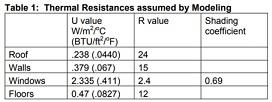
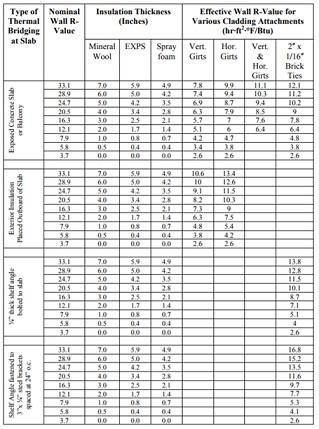
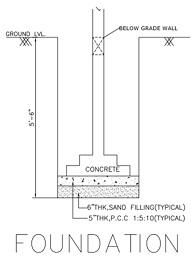
c. Metal Roof Sloped Roof Assembly
Answer: Roof slope is classified into two categories such as low slope as well as steep-slop.
Low roof slop is having 3 inches slop per foot. This type of roof is act as water and moisture barriers. In This type of Roof, water is slow moving. Roofs are having more than 3 inches slope per foot is called as steep-slop. Water is fast moving to the drainage in this type of roofing.
Requirements for metal roof: • Seam metal roof of Non soldered with lap sealant should be horizontal - 12 units and vertical - 3 units
• Seam metal roof of nonsoldered without lap sealant will be horizontal-slop of 4% and vertical-12 units
• Metal roof of shingles should not installed in roof slopes at below, horizontal-12 % and vertical - 12 units

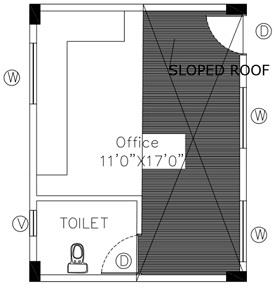
GET GUARANTEED SATISFACTION OR MONEY BACK UNDER ASSEMBLY DESIGN AND BASIC DETAILING ASSIGNMENT HELP SERVICES OF EXPERTSMINDS.COM – ORDER TODAY NEW COPY OF THIS ASSIGNMENT!
d. Roof Deck Assembly
Answer: Solid deck or closely located deck is required for architectural panels. The deck can be made up of metal, separate wood material, plywood as well as cement. Substrate is made up of smooth material which releases from obstruction. The slopes are minimum of 3:12 and maximum of 4:12 for roof decks.
e. Below Grade Floor Slab Assembly
Answer: Mud and slab including water proofing comprises base floor for carrying pressure load of hydrostatic pressure. Materials and system requirements for floor slab are listed below:-
• Finish coverings of floor
• Floor slab of concrete
• Drainage layers in aggregate manner
• Membrane of waterproofing
• Drainage layers with prefabrication
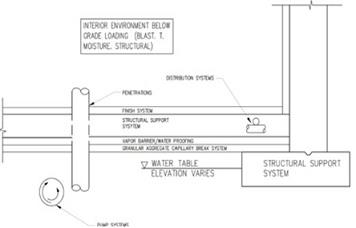
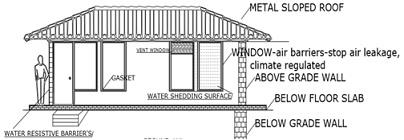
f. Detailed Building Enclosure Section from Below Grade Floor to Roof Including Window and Floor Interfaces.
Answer: Building Enclosure section from Below Grade Floor to Roof with window and floor interfaces
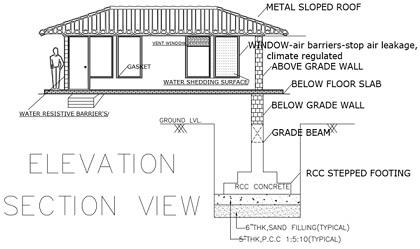
Cladding and roofing: Cladding offers attractive appearance for the building. It also protects the buildings from rain, sun lights and other foreign agents. It acts as protective layer for the building. The performance of the building can be increased with proper cladding.
Cladding will be performed with different materials such as stone, wood, RCC, brick, plastic, laminates,dichronic, wienerberger'sclay tiles, and metal. There are various techniques for cladding such as anti-scratch and anti-vandal-resistant designs.
Parameters for selecting roof steel cladding the following are the considerations:
• Durability
• Cost
• Strength
• Eco friendliness
• Thermal insulation
• Appearance
• Lightening protection
• Design detailing
• Sound insulation
• Fire resistance
• External attachments
• Renewal, remedial work and maintenance
The project work follows the built-up double skin cladding for roofing.
24/7 AVAILABILITY OF TRUSTED ASSEMBLY DESIGN AND BASIC DETAILING ASSIGNMENT WRITERS! ORDER ASSIGNMENTS FOR BETTER RESULTS!
Part 2: Window Selection
List the manufacturer and summarized the relevant information for your selected window including U-value, SHGC and any other criteria you might find useful.
Answer:
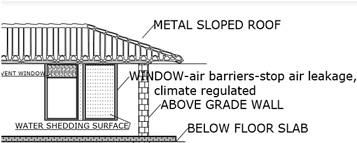
|
S.No
|
Manufacturer
|
Details
|
|
1
|
A&L windows and doors
|
Boutique Aluminium Awning windows
|
|
2
|
AWA-AGGA limited
|
Radiant Heat Transfer
|
Part 3: Heat Loss Calculation
Perform the heat loss calculation using the January Wintertime Design Temperature for West Vancouver of -9°C for the above grade components. Below grade heat losses are more complicated, but here assume a ground temperature of +5°C for assemblies in contact with ground.
Answer: Total heat loss at design temperature = Conductive (above + below grade) + Convective heat loss Q total = Q conductive + Q infiltration
FORMULAS:
Conductive heat loss, Q = U*A*?T
Q = Total heat loss
U = Overall co-efficient of heat
A = Area - assembly with coefficient of heat transmission U
?T = (Ti - To) - Temperature difference between indise & outside g temperatures.
Example: (approximate value)
U = 265 W/m^2 U = 1/(Ri + R1 + R2 + R3 + Ro)
A = 5.0 m^2
?T = 1135 W
Substitute these values in the given formula's
Q = 265 x 5 x 1135
Therefore, Q = 1503875watts
FORMULAS: Air leakage heat losses, Q = 0.3 n*V*(Ti - To)
Air leakage heat losses = Room volume x temperature x Air changes per hrs.
Q = Total heat loss
n = number of air changes per hr
V = Volume of house
?T = Temperature difference between indise& outside gtemperatures.
Example: (approximate value)
U = 0.075 W/m^2 U=1/(Ri+R1+R2+R3+Ro)
V = Area of each zone* infiltration
Area of zone = 256sft
infiltration - 0.15cfm/ft2
V = 38.4cfm/zone
?T = 90 W
n = 0.24
Substitute these valuse in the given formula's:
Q = 0.3 * 0.075 * 0.24 * 38.4 * 90
18.6624
Therefore,Q = 18.6624 per hr
WE HELP STUDENTS TO IMPROVE THEIR GRADES! AVAIL TOP QUALITY ASSEMBLY DESIGN AND BASIC DETAILING ASSIGNMENT HELP AND HOMEWORK WRITING SERVICES AT CHEAPER RATE!